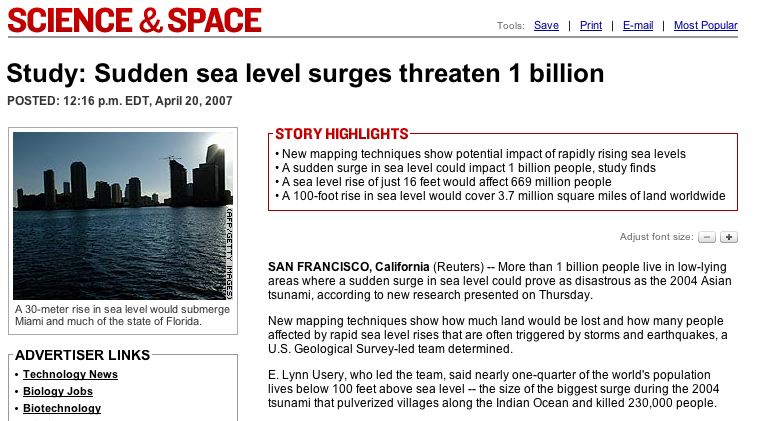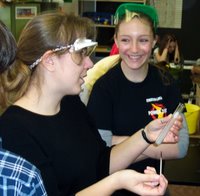Our school has run a successful paper recycling program for years, however that environmental spirit never quite made it to aluminum cans. Sure, we had a separate can recycling container in the cafeteria, but you know how it is with middle school kids.... Aluminum ended up in the trash, and trash ended up in the recycling containers. Ultimately and simply, the cans ended up in the dumpster along with the rest of the trash. In an effort to authenticate our environmental science unit, our team took on the challenge of recycling the school's aluminum.
STEP 1: Research & pitch - We researched about the ecological benefits of recycling. I think the kids' favorite statistic was that "when you recycle an aluminum can, you save enough energy to power your television or computer for three hours." (Our sources included
Earth911.org, the Utah State University
recycling site , and
Novelis.)
The kids developed their pitch and met with the school principal and head custodian. I was proud of my group. They took this meeting very seriously. Our "committee" asked great questions, and gave thoughtful responses to the administrations' concerns. Finally, we were approved for a one month trial.
STEP 2 - Promotion - The students then made posters (made from paper we took from the paper recycling bin, of course) and hung them around the school. Small groups of kids from our team rotated through the lunch periods for a week, acting as "recycling cheerleaders" - encouraging and applauding for their peers who chose to recycle their cans in the appropriate canister, rather than in the trash. The students recognized that, in order for this to work, the other 700 kids in the school would have to develop habits that helped our cause.

STEP 3: Recycle! - This was the "fun part." (Well, unless you asked the kids in January when we were crushing cans in boots and gloves in sub-zero
Chicagoland weather!) Twice a week, I unleashed the crew. In 15 minutes, we were usually able to process 200-300 cans, going from stinky cafeteria bags of aluminum mixed with various foodstuffs to bags of somewhat clean, crushed cans ready for the scrap metal facility. (We also pulled tabs to donate to the
Ronald McDonald House.)
STEP 4: Manage profits - While the kids knew the environmental benefits of energy and resource conservation, there was an added bonus of generated funds from turning in the aluminum. In fact, we made over $200 during the year. In one of our many brainstorming sessions, after voting down reclining chairs and a team vending machine (sigh), one student piped up, "wouldn't it be cool if we planted a tree to help fight global warming?" Now, I recognize there is some
debate as to the carbon sequestering benefits of planting trees,
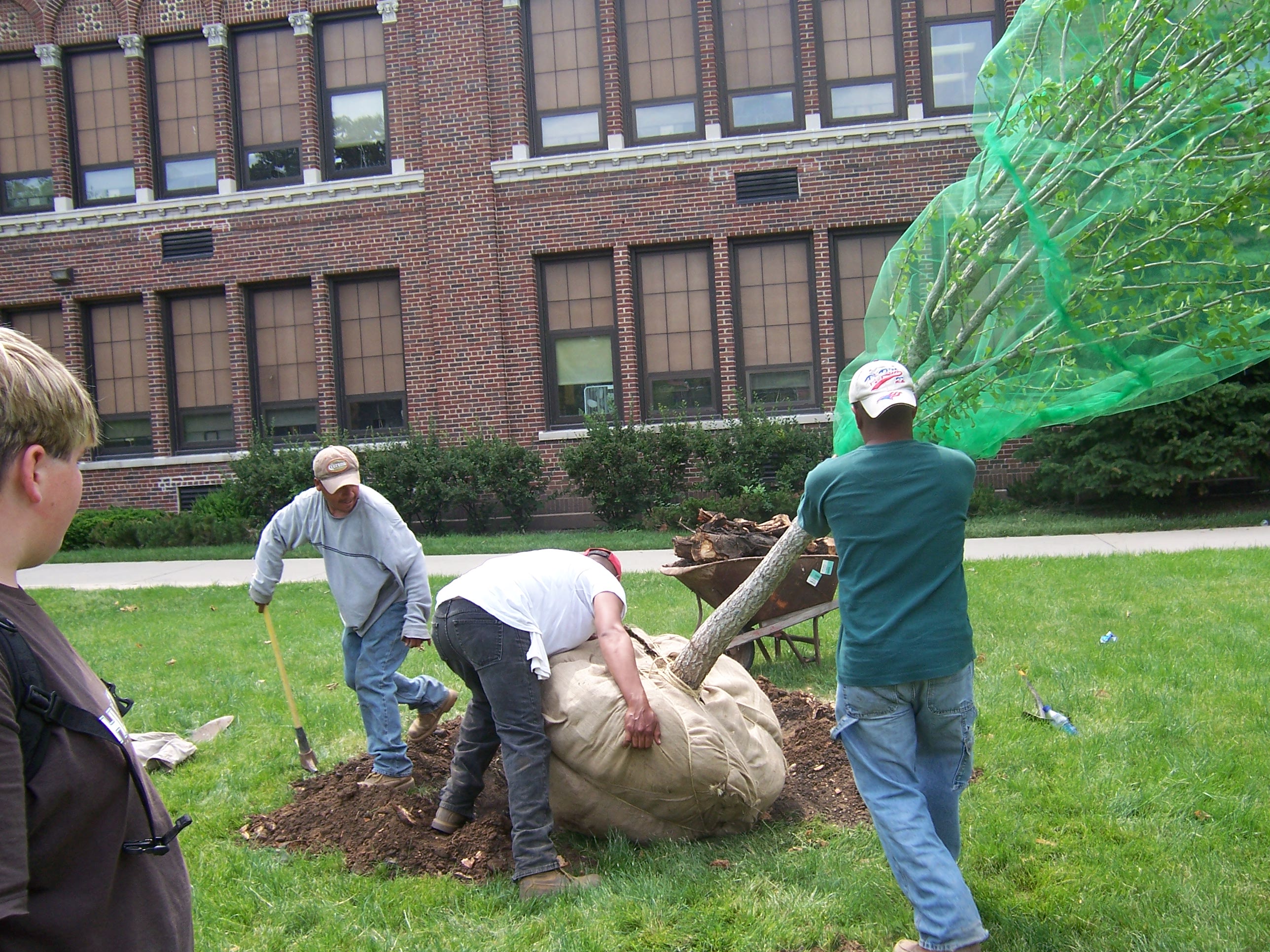
but I thought it was a great idea. We had learned about carbon dioxide and greenhouse gases. We had learned about photosynthesis. And, we had learned about our soon-to- emerge periodical
cicadas and their effect on newly planted trees. Great, let's plant a tree! We opted to plant a
ginkgo tree.
STEP 4A: The "plaque" - The kids weren't done yet. They wanted to install a plaque, to commemorate our ordeal. Since we had discussed Chicago's "
Cool Globes: Hot Ideas for a Cooler Planet" program this summer, a student suggested we make our own globe. Now, I can seldom resist an artistic challenge, however, we were out of funds. (The PTO had already graciously kicked in funds to pay for the planting of the tree.)
But, we were determined and a bit lucky. A generous eBay seller (with a little encouragement) donated an antique
finial. (And I drove 6.5 hours to pick it up... unfortunately, in my CO2 emitting vehicle.) A moment of serendipity introduced us to a
local artist who suggested
pique assiette,
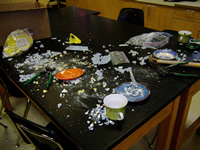
rather than paint, for our final project. Plus, she was willing to work with the kids to teach them the technique.
This began a flurry of plate gathering - which the kids
thoroughly enjoyed breaking into pieces.... The entire project was completed by the students themselves,
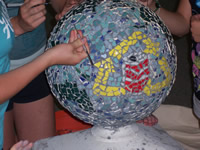
from design submissions, to voting on the final design, to sketching, breaking and reassembling the pieces, and finally the grouting and polishing. My favorite part is the cicada the kids included at the base, near the "2007," to commemorate our 17-year visitors.
When it was all finished, we had a stupendous final product. I hope the kids are proud, keep recycling, and come back to visit our tree for many years to come.
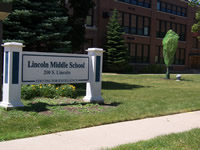
Labels: misc., teaching





